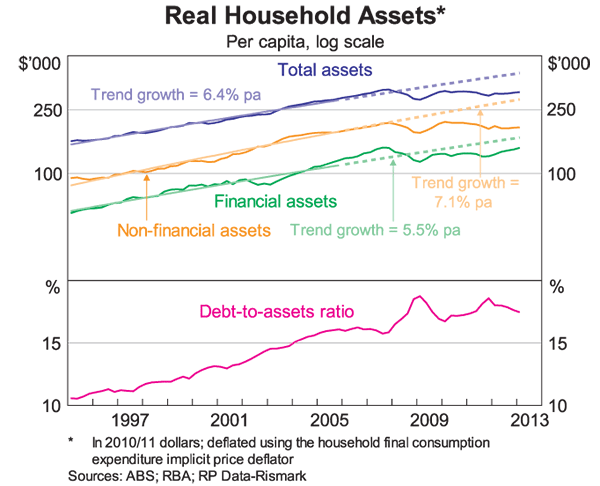RBA boss Glenn Stevens dampens expectations for strong house price growth
Regardless of whether you view housing as overvalued or not, it is unlikely there will be sustained in growth in asset values above 7% per year over the next few years, says RBA governor Glenn Stevens.
In a speech to a luncheon in Sydney today, Stevens re-affirmed there was scope for further monetary policy easing if necessary, casting doubt over the progress of the economy transitioning from mining to non-mining sectors.
"In brief, business capital spending outside the resources sector has been subdued; housing investment likewise has been on the low side.
"There is ample scope for both to rise.
"This is by no means a certainty though and while there are signs of an increase in dwelling investment getting under way, a stronger trend in non-resources business investment looks like it is a while off yet," he said in a speech called 'Economic Policy after the Booms' to the Anika Foundation Luncheon.He also highlighted the lower value of residential property today than during the GFC and that growth in asset values was unlikely to return to what it was before the financial crisis.
“One's assessment of prospects for consumption will be driven mainly by one's assessment of the outlook for income, but will also be affected by expectations about asset values and in particular one's view on whether housing prices are overvalued,” said Stevens.
“Those who think they are will be drawn to the conclusion that a number of additional years of flat or declining real per capita asset values lie ahead, for non-financial assets at least; those who are not so worried about housing prices may expect that stronger growth, in real per capita terms, might occur.
“Either way, however, it would seem unlikely that we could bank on a resumption of sustained growth in assets, in real per person terms, of 7% per year over the next few years.
“It follows that the saving rate is unlikely, any time soon, to decline back to where it was in 2005.”
The 7% figure relates to a chart included in the presentation showing trend growth for non-financial assets (the gold line) and the dip that has occured since the onset of the GFC:

Stevens also highlighted that the RBA would be monitoring the changes in the make-up of investment portfolios in light of lower interest rates and the shift to riskier assets.
“One of the things we have been watching for as we have been reducing interest rates has been an indication of savers shifting portfolios towards some of the slightly more risky asset classes, as that is one of the expected and intended effects of monetary policy easing.
“There are clearly signs of policy working in this respect, though not, to date, by so much that we see a serious impediment to further easing, were that to be appropriate from an overall macroeconomic point of view.”
